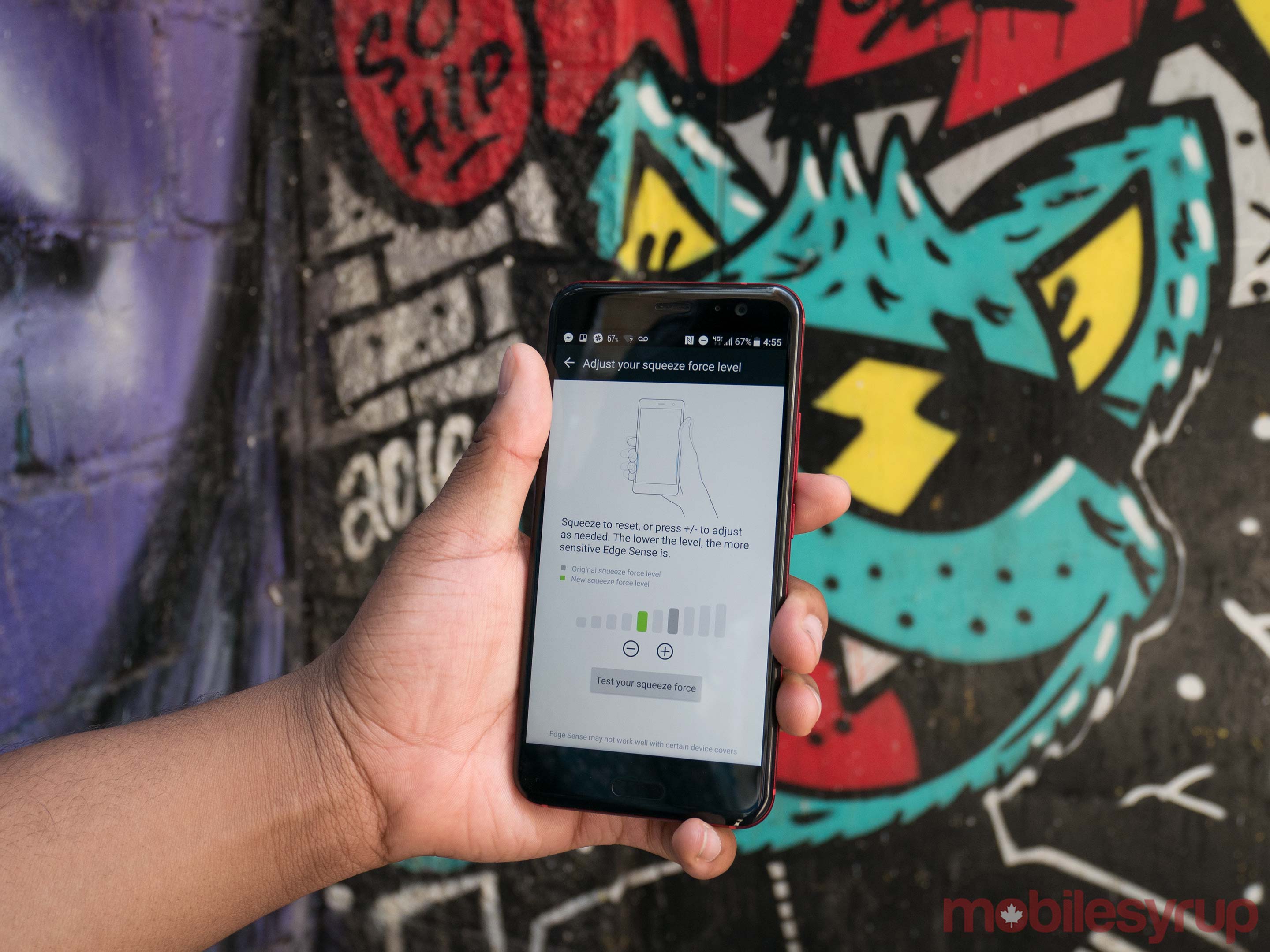Squeezing a smartphone to launch an app sounds like an odd gimmick, but after using the HTC U11 for the past few months, I’ve come to realize how innovative the feature is.
Squeezing to launch the camera app, Google Assistant, Alexa or any other app on my smartphone has proven helpful time and again. The U11 even allows for custom actions. For example, U11 owners can use the feature to skip a song, start composing a new tweet and switch between the smartphone’s two cameras.
The Pixel 2 and Pixel 2 XL feature a similar functionality called Active Edge. While Active Edge sounds like a copy of Edge Sense, it’s far from it, due to the fact that it does so much less.
Pixel 2 users can take advantage of Active Edge to launch Google Assistant and silence a phone call with a simple squeeze, that’s it. While using Active Edge to launch Google Assistant is practical, the fact it’s not possible to do much else with the feature, is a lost opportunity.

Squeezing the Pixel 2 and Pixel 2 XL has a nice click to it, especially on the smaller HTC-made variant, while the larger Pixel 2 XL’s tall body proportions make it easier to squeeze. Unfortunately, you can’t squeeze the frame of either the U11 or the Pixel 2 to launch specific apps or functions.
The U11’s pressure-sensitive frame isn’t difficult to use either, but the feeling of the Pixel devices’ pressure sensitive frame is, in my opinion, better.
The U11’s aspect ratio and size make it harder for smaller hands to squeeze. Additionally, the haptic feedback produced by the U11 — which can be turned off — doesn’t feel as good as the satisfying click that’s made by both Pixel smartphones.
While I loved the U11, I would have preferred Edge Sense had the phone featured a slimmer aspect ratio and produced a similar click instead of vibrating. On the other hand, it’s unfortunate the Pixel 2 and Pixel 2 XL don’t do more with Active Edge.
![]()
Thankfully, that’s something that could be fixed with future software updates. At first, the Edge Sense couldn’t perform most of the in-app actions it’s capable of doing today, but an over-the-air update allowed for more functionality. While Google has not announced if it plans to do more with Active Edge, it’s a distinct possibility.
Additionally, with Google acquiring a portion of HTC’s phone-making business, Active Edge is likely to get better with time, especially as the company releases new devices that take advantage of the feature. However, as of right now, with its more diverse set of features, Edge Sense is superior, even though the U11 may not be.
Note that rumours point towards the Taiwanese phone maker unveiling a 6-inch HTC U11 Plus which will feature an 18:9 aspect ratio, slim bezels and Edge Sense. If this smartphone is actually released, it might fix some of the issues hardware-wise that make Edge Sense difficult to use.
HTC’s event is slated for November 2nd. For more on HTC U11 and the Pixel 2 and 2 XL stay tuned to MobileSyrup.
MobileSyrup may earn a commission from purchases made via our links, which helps fund the journalism we provide free on our website. These links do not influence our editorial content. Support us here.


